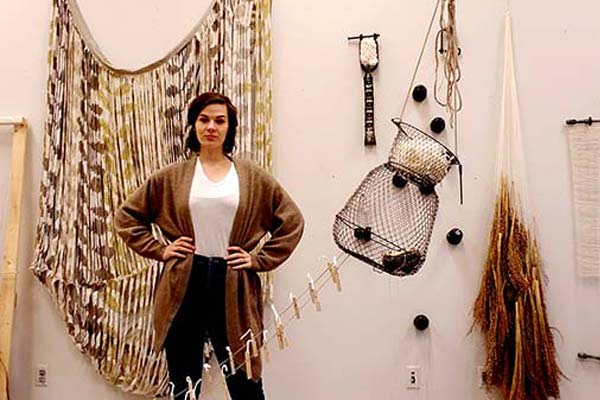Inside the Studio with Sophia Ruppert
Inside the Studio offers a behind-the-scenes peek into the work environments of WTP artists, as well as insight into their creative process within these resonate spaces. See Sophia Ruppert’s work in WTP Vol. VIII #7.
By Jennifer Nelson, WTP Feature Writer
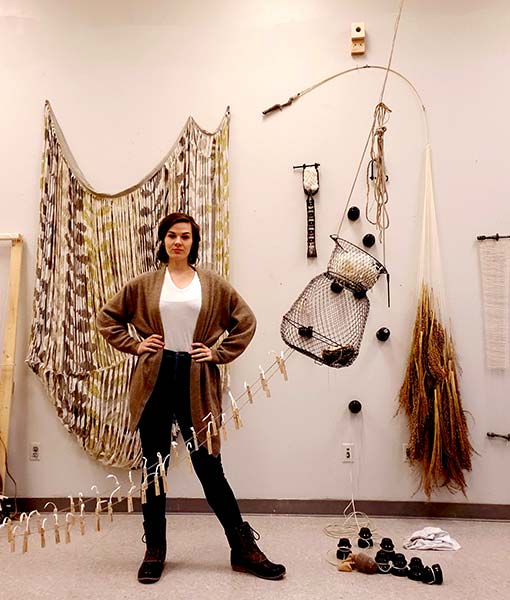
Seven months ago, Sophia Ruppert moved her studio from the University of Nebraska, where she teaches, to a warehouse in an industrial part of Lincoln, with a high ceiling that opens up to industrial beams, ductwork, and pipes. Ruppert shares the space with a painter. “Splitting the place between a 2-D and 3-D artist is surprisingly easy as we both have different spatial needs,” says Ruppert. Her warehouse studio space is long and narrow, so her work has become smaller than work done at the university studio where she could utilize large portions of walls, floor, and physical space. “My previous studio was very pristine and, being at a university, I had limitations to how I could work within it. At my current studio, I can build walls or paint the room an entirely different color if I need to.”
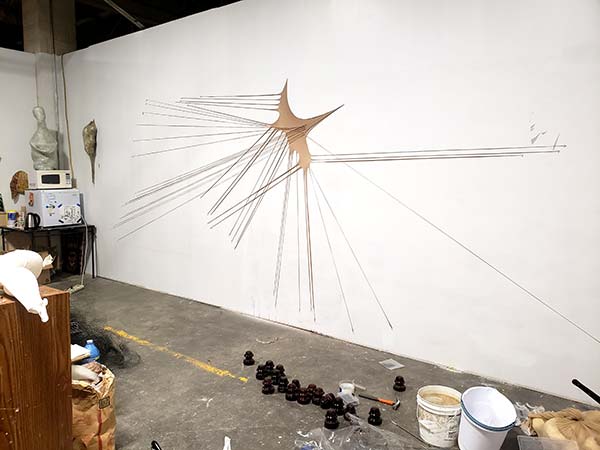
Sculptors constantly struggle to find places to store materials and finished work, says Ruppert. She solved this problem by storing her materials in several different locations such as her garage, basement, car, and studio. “I like being able to see many materials at the same time because visualizing them in different contexts lets me see them in different ways,” she says. This means that many materials are scattered throughout her studio—on the floor and shelves, and in boxes.
Ruppert believes that a physical studio helps with the creative process, but that work can be done anywhere. During the pandemic, she’s been binding books on her couch, doing stained glasswork on the kitchen table, and weaving on a cardboard loom in bed.
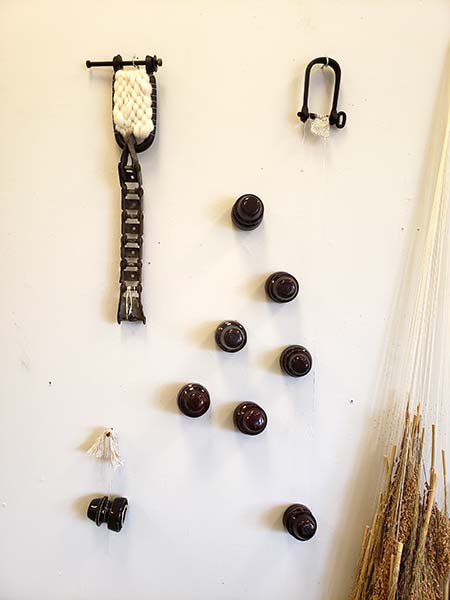
Since she values routine, Ruppert maintains a schedule of arriving at the studio at 7 a.m. and finishing between 3 and 4 p.m. She begins her day with 30 to 45 minutes of coffee and catching up on news. After that, she puts on an audiobook or podcast and gets to work, sometimes she listens to matters related to what she’s making. Occasionally, she collaborates with another sculptor to create interactive installation rooms. Her collaborator is knowledgeable about digital projections and plays with reflecting and refracting light. The two women combine atmospheric space and physical objects to create immersive experiences. “I always walk away from our projects feeling refreshed and optimistic,” she says.

Recently she’s been working on found object manipulation and installation, as well as including fiber in her artwork. She constantly experiments with Lycra, a four-way stretch fabric, of which she has hundreds of yards, and she buys her materials from second-hand stores. She loves materials that contain an embedded history through their dilapidation or visual wear. Her collection of materials is guided by weight, wear, age, history, and narrative. She often works on two to five different projects at a time. “I pick objects that align with a broad statement or feeling,” she says. “My process is intuitive and impulsive and, as a result, it is all over the place.”
This means that she gives up a certain amount of control, letting materials dictate results. She begins by laying out as many materials as she can, then picking up an object to see what it can be paired with. She plays games with materials, seeing what works well with others. “If materials are working in a compelling way, I analyze what is happening and then continue with an intention for a final product,” she says. “It is rare that I start a project with a preoccupation for a specific result.”
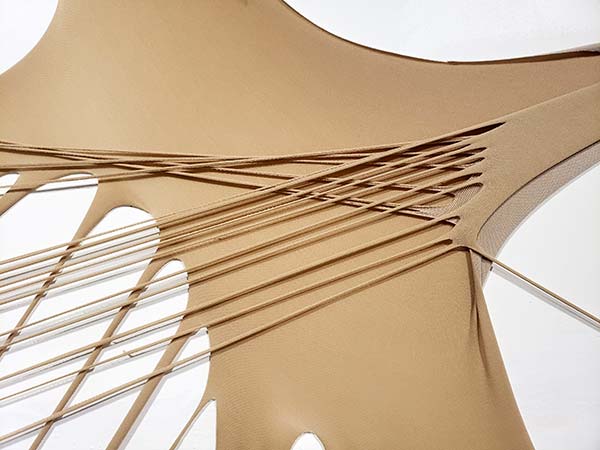
Copyright 2020 Woven Tale Press LLC. All Rights Reserved

